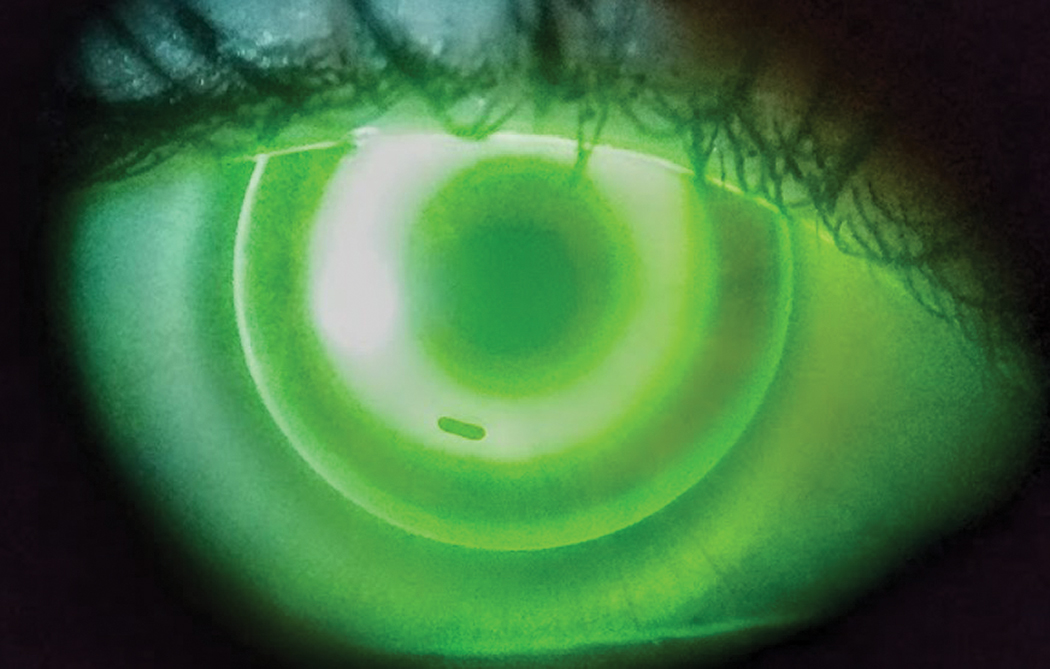 |
| After ortho-K treatment, eyes in the 5mm optic zone group had a smaller treatment zone, although there was no difference in decentration. Photo: Dan Fuller, OD. Click image to enlarge. |
Overnight wear of orthokeratology (ortho-K) lenses elicits a flattening of the central portion of the cornea as well as a steepening of its peripheral portion. The flattened central portion of the cornea improves daytime vision, while the steepened peripheral causes a relative corneal refractive power shift from the baseline, leading to myopic defocus on the peripheral retina. Many researchers have suggested this as the underlying mechanism of slowing axial length (AL) growth. A recent study presented in Seattle last week at ARVO 2024 highlighted that a smaller back optic zone diameter (BOZD) in an ortho-K lens was associated with a greater accumulation of relative corneal refraction power shift in the central 4mm area.
The double-masked and self-controlled prospective study involved a collaboration between Tianjin Eye Hospital in China and Nova Southeastern University in Fort Lauderdale, FL. In 34 children (14 boys and 20 girls; ages nine to 12), one eye was randomly assigned to wear a 5mm BOZD lens and the other eye a 6mm BOZD lens. Evaluation visits were scheduled at baseline, one day, one week, one month, three, six, nine and 12 months after the initial lens wearing. Corneal topographies were measured at each visit, and axial length was recorded at baseline, six-month and 12-month visits. Tangential power maps were used to quantify the treatment zone size and decentration. Axial power maps were used to analyze the relative corneal refraction power shift, and the relative corneal refraction power shift accumulated within the central 4mm area was calculated.
At baseline, there was no difference in refractive error (-2.52D vs. -2.45D) or axial length (24.50mm vs. 24.50mm) for eyes wearing lenses of different BOZDs. After treatment, eyes in the 5mm optic zone group had a smaller treatment zone (6.63mm2 vs. 8.11mm2), although there was no difference in decentration. Axial length growth was significantly smaller for eyes in the 5mm optic zone group (0.19mm vs. 0.26mm). Significantly greater relative corneal refraction power shift accumulated within the central 4mm area (15.54D*mm2 vs. 10.40D*mm2) was also observed in participants wearing 5mm lenses. Relative corneal refraction power shift was significantly associated with axial length growth.
“Children wearing orthokeratology lenses with smaller BOZD showed much smaller axial length growth,” the researchers concluded in their abstract. “Such a difference was associated with a greater amount of relative corneal refraction power shift.”
Original abstract content ©2024 Association for Research in Vision and Ophthalmology.
Wang T, Green N, Bi H, et al. The myopia control effect in children wearing orthokeratology lenses with different back optical zone diameters. ARVO 2024 annual meeting. |

